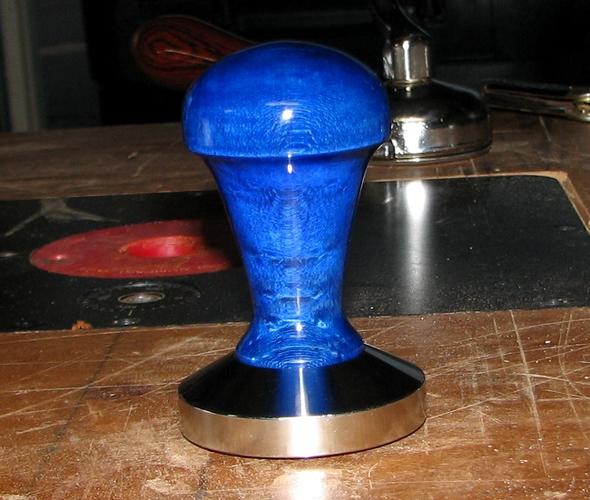Results 1 to 9 of 9
 10Likes
10Likes
Thread: Natural wood stains.
-
09-02-2012, 01:38 PM #1I love Burls....... and Acrylic



- Join Date
- Mar 2012
- Location
- Baden, Ontario
- Posts
- 5,475
Thanked: 2284 Natural wood stains.
Natural wood stains.
Hey there guys. Just wondering if anyone has any experience using a natural wood stain before. Here's what i'm thinking, I have 2 blades Iv'e cleaned up and am ready to make scales for. The one is an old Boker king cutter that I think would look good in some birds eye maple, stained bright red. Iv'e been flip flopping back and forth between a green stain and a red stain and i'd like to use a natural stain. The 2 stains for these colors I was thinking of using is beet juice and grass juice. I have a slab of regular maple that I'm going to test on first, before I decide to to put it on my birds eye. Just wondering if anyone has ever used a natural stain with good results.
-
09-02-2012, 02:03 PM #2Senior Member


- Join Date
- Jan 2011
- Location
- Roseville,Kali
- Posts
- 10,432
Thanked: 2027
Have used black walnut hulls (boiled) to ebonize poplar in the past.Messy but worked well.
-
09-02-2012, 02:16 PM #3I love Burls....... and Acrylic



- Join Date
- Mar 2012
- Location
- Baden, Ontario
- Posts
- 5,475
Thanked: 2284
Yeah, Iv'e read about the walnut hulls before. Very cool, I'd love to see some pics of that. The thing about wood razor scales is, I would never want to change the appearance of the exotic woods with a stain because most are just so beautiful. I think a red stain on the birds eye maple wood just make it pop! especially after 8 coats of high gloss polyurethane. I think the use of a natural stain on razor scales is just so fitting.
-
09-04-2012, 04:05 AM #4

I use Aniline dye. This is a espresso machine tamper handle I turned from birdseye, dyed with blue aniline and finished with 6 or so coats of catalyzed urethane. Maple is very bad about grain raise. If you use a water based dye, the grain will pop up and get very rough and require sanding which will take off most of your dye. Use an alcohol or oil based dye and that will not happen.

-
The Following 2 Users Say Thank You to cannonfodder For This Useful Post:
HARRYWALLY (09-04-2012), mapleleafalumnus (09-06-2012)
-
09-04-2012, 04:18 AM #5

You can also change the color of certain woods without using dyes or stains. For example; purple heart can be made a darker, deeper purple using heat. UV lights will make cherry a deeper red, turn teak a green color and lighten mahogany.
-
09-04-2012, 10:20 PM #6I love Burls....... and Acrylic



- Join Date
- Mar 2012
- Location
- Baden, Ontario
- Posts
- 5,475
Thanked: 2284
This is exactly what I want to do but in Red. Aniline is a water based stain. How did you deal with the grain raise?
-
09-06-2012, 02:33 AM #7

Concentrate mixed with rubbing alcohol. You can also mix the tint with your finish. You can even use a base color then tint the finish for a different effect. On woods with figuring, the figure and straight grain will be two different densities. You can do cool stuff like put on dark dye, sand the wood to remove the color from the denser parts where the dye does not penetrate as deep then put on a second color to get contrasts between the grain densities but that is a bit more advanced technique and take a lot of practice to get right.
-
The Following 2 Users Say Thank You to cannonfodder For This Useful Post:
HARRYWALLY (09-06-2012), mapleleafalumnus (09-06-2012)
-
09-06-2012, 02:43 AM #8
-
09-06-2012, 02:45 AM #9

Have fun, and ware gloves unless you like bright red fingers for a week. Been there done that.



 LinkBack URL
LinkBack URL About LinkBacks
About LinkBacks






 Reply With Quote
Reply With Quote

